“Girl Baseball Players” Cigarette Pack Cards Of The 1880s
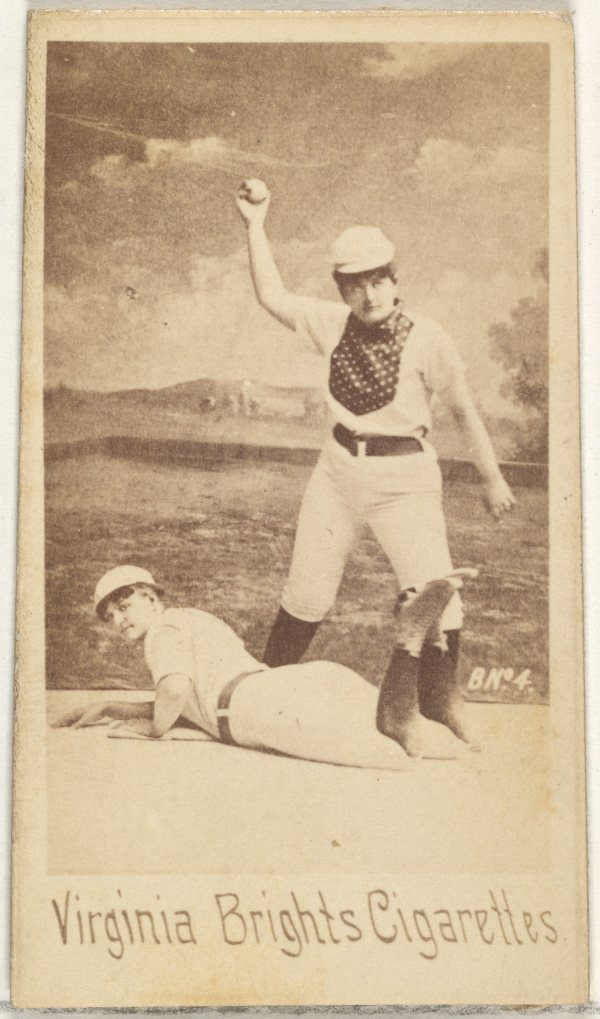
Type 1, Card 4. Note the prominent "Virginia Brights Cigarettes" logo at the bottom.
In 1886, Virginia tobacco manufacturer Allen & Ginter created two unusual series of baseball cards to promote their Virginia Brights brand.
Virginia Brights, according to the firm, were "unexceptionably fine" and "unusually mild" cigarettes from the state's "Bright Districts" that offered "great comfort and satisfaction to those who inhale the smoke of their cigarettes."
To peddle that satisfaction to their predominantly male smokers, Allen & Ginter chose not to include cards featuring hand-painted portraits of star baseball players from the era in their cigarette packs, an increasingly common practice. Instead, they hired female models to pose as baseball players in two series of sepia-toned baseball cards.
The "Type 1" "Girl Baseball Players" series shows a female baseball player or players wearing a polka-dotted bib. The "Type 2" series, lessening the indignity, depicts the women in standard uniforms, sometimes with player positions noted somewhere on the image.
These novelty baseball cards weren't meant merely for promotional purposes: Their stiffness helped the ten hand-rolled cigarettes in the pack stay uncrushed and intact, the second instance in the production pipeline of female labor ensuring a quality smoke.
In an industry-changing move, that same year Allen & Ginter also became the first tobacco company to employ females, with more than 1,000 girls hand-rolling Virginia Brights and other brands at their Richmond warehouses.
But work for women on the baseball diamond was still unavailable. More than a half-century before A League of Their Own-era women proved their baseball bonafides, these anonymous women, instead of even being given the chance to play, were used as props to help convince men to prolong a deadly smoking habit.
Why did Allen & Ginter use these women in this way? The images in the gallery above, while playful, are far from pornographic, even by late 19th-century American standards. And there do not appear to be any contemporary accounts of Allen & Ginter's motives for creating the cards, leaving one to wonder and worry if misogynist ridicule, as opposed to titillation, sparked their creation.
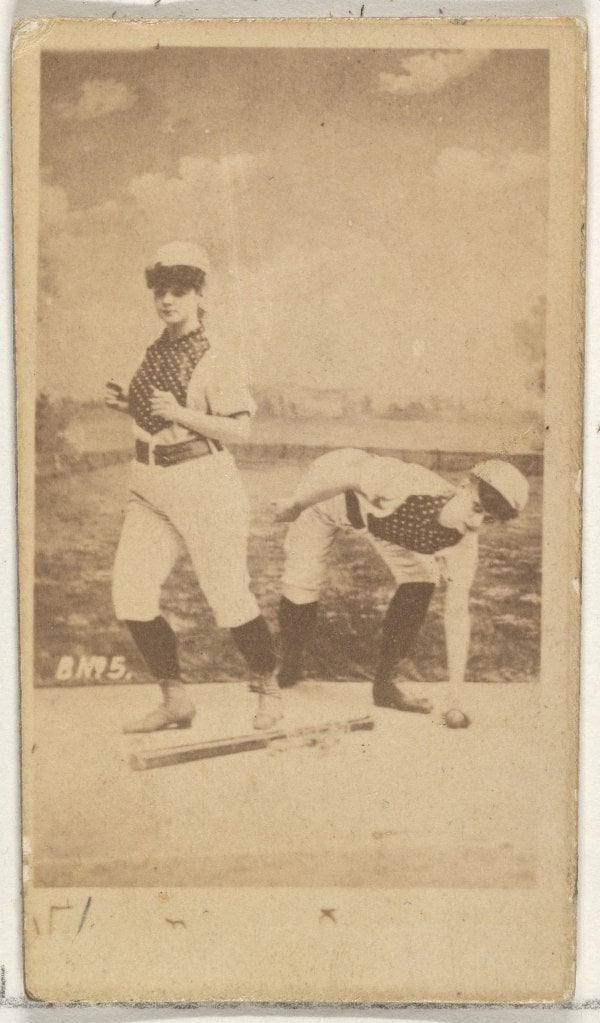
Type 1, Card 5. The most prominent display of the polka-dotted bibs in the set. Note the absence of the Virginia Brights logo, lost, perhaps, from frequent handling.
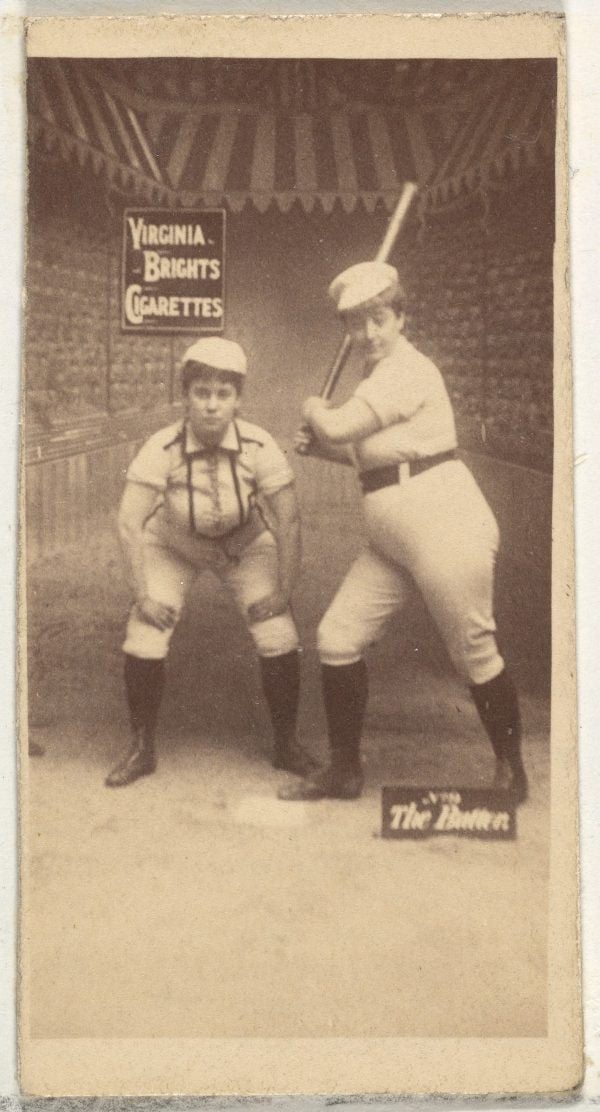
"The Batter," Type 2. Note the Virginia Brights Cigarettes box logo, common in Type 2 cards.
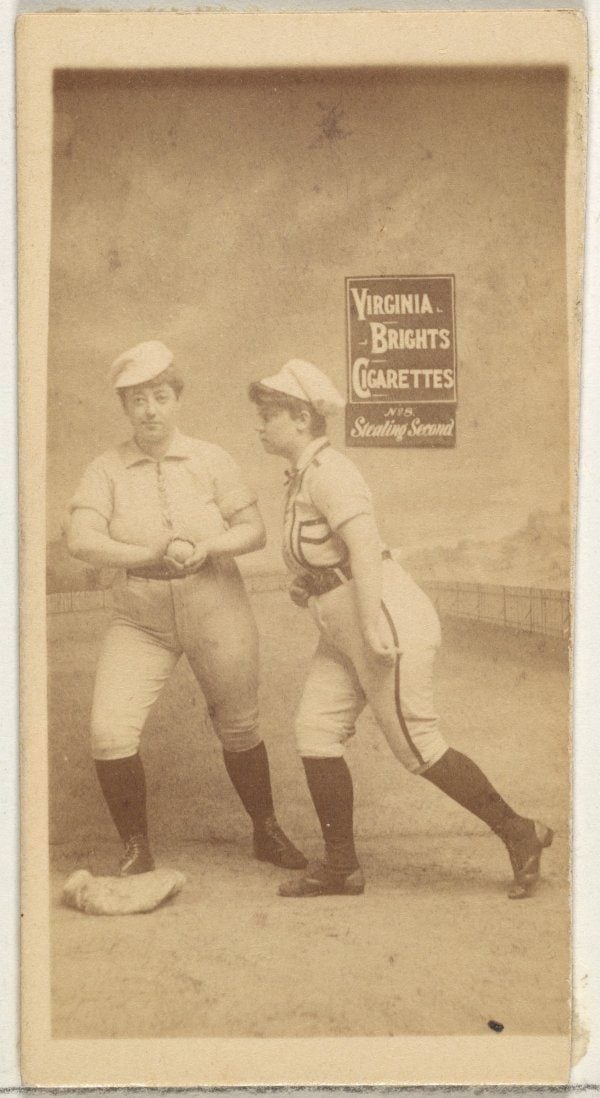
"Stealing Second," Type 2. The only card in the set with a title that describes the scene.
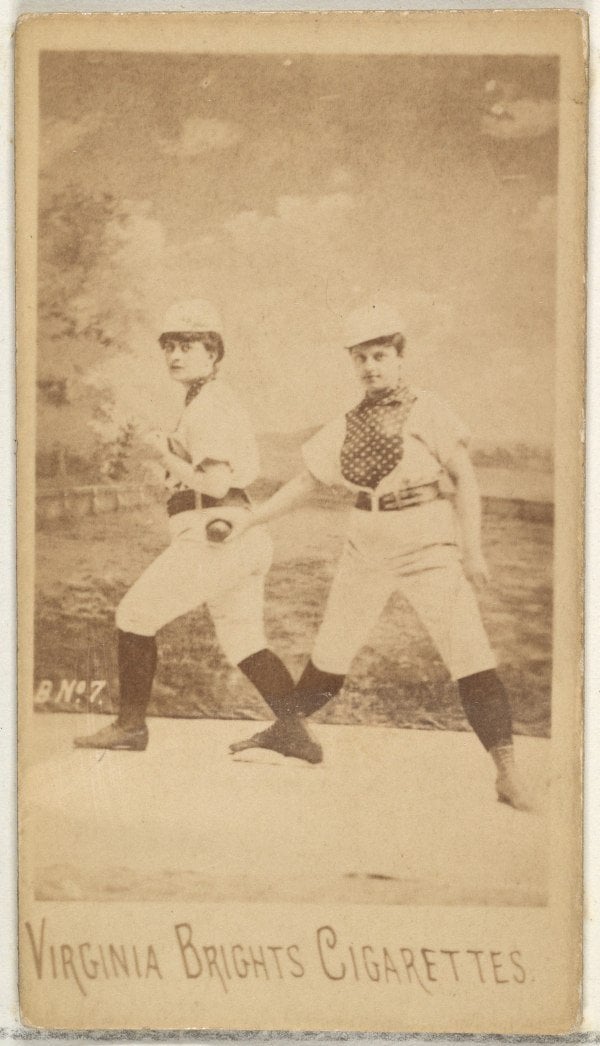
Type 1, Card 7. Appears to depict a second baseman tagging out a runner.
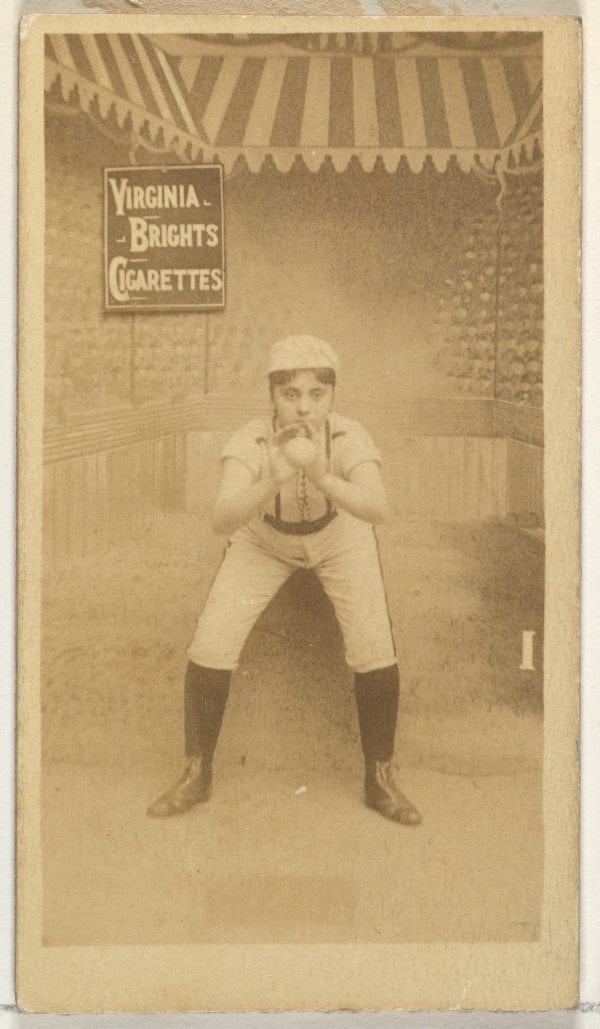
Type 2, Card 1. A mitt-less catcher in front of a stadium matte painting.
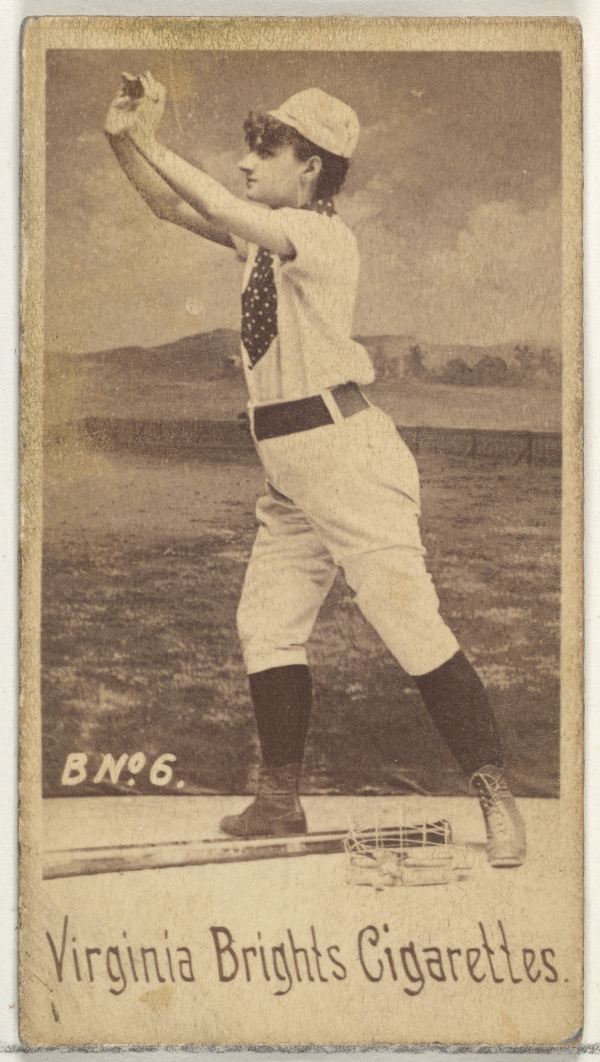
Type 1, Card 6. Note the primitive catcher's mask.
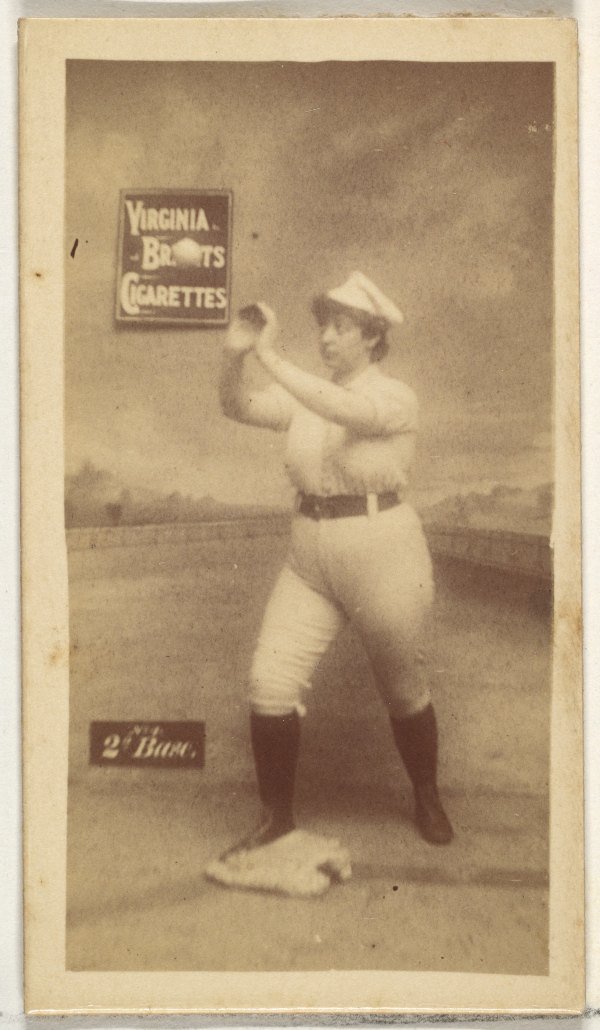
Second Base, Type 2.
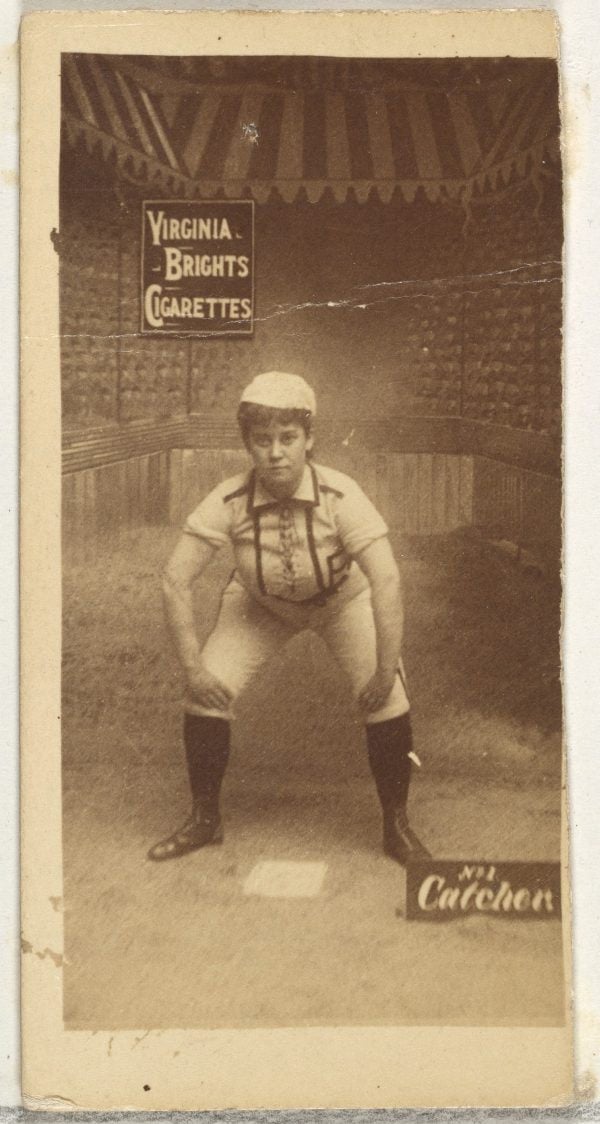
Catcher, Type 2.
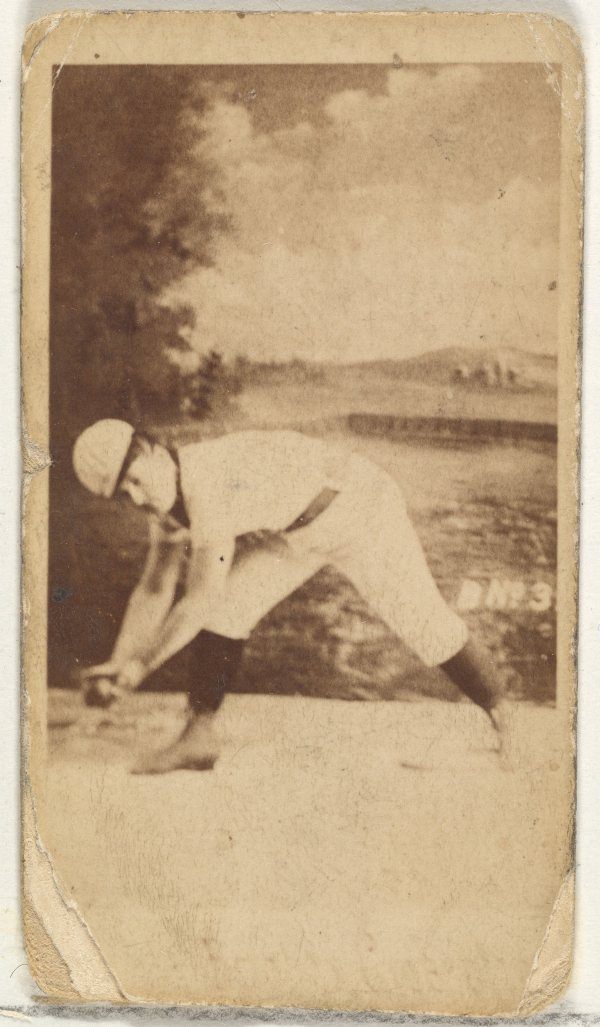
Type 1, Card 3. A rare Type 1 card without the Virginia Brights Cigarettes logo.
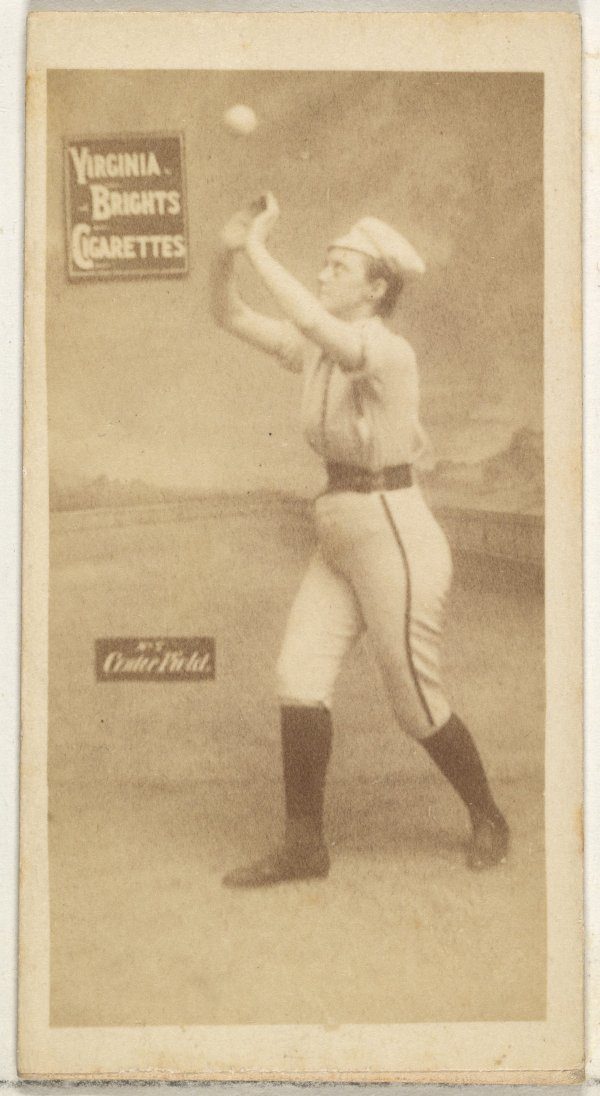
Center Field, Type 2.
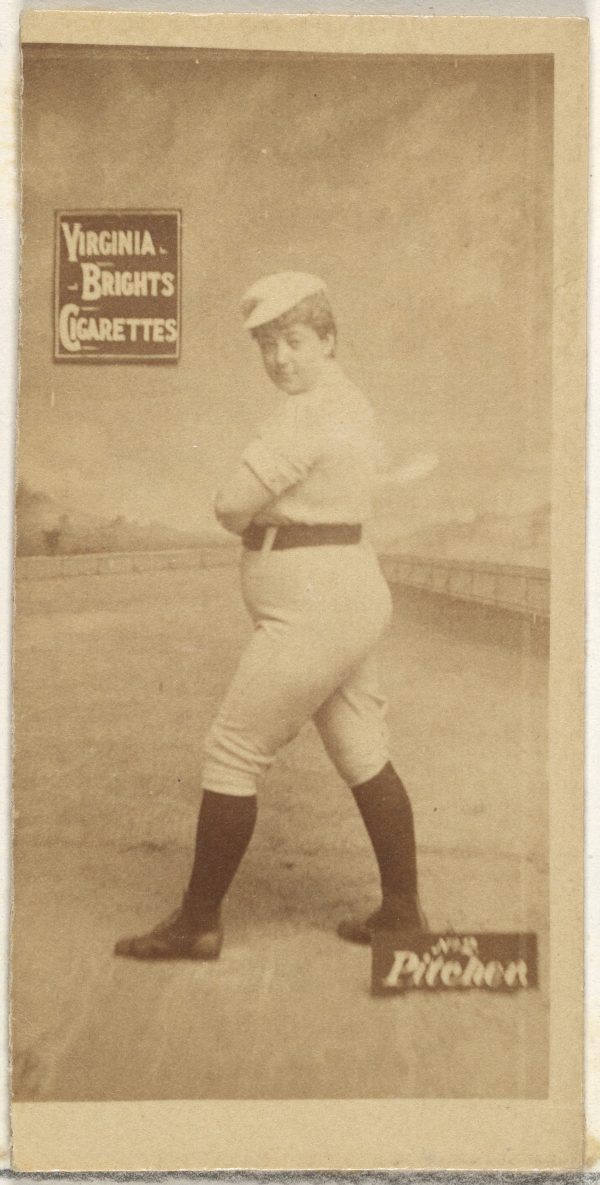
Pitcher, Type 2.
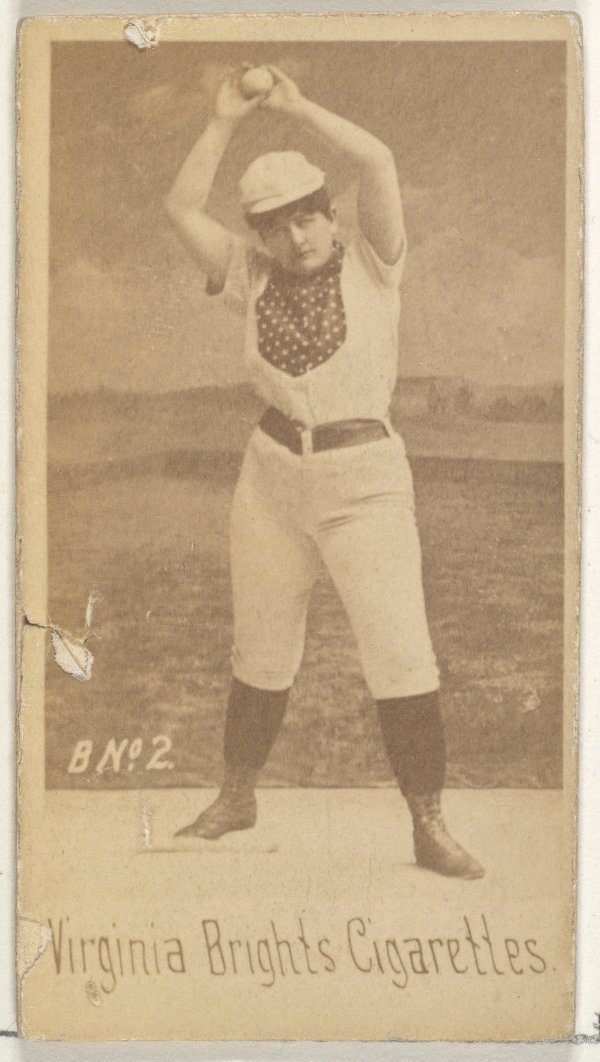
Type 1, Card 2.
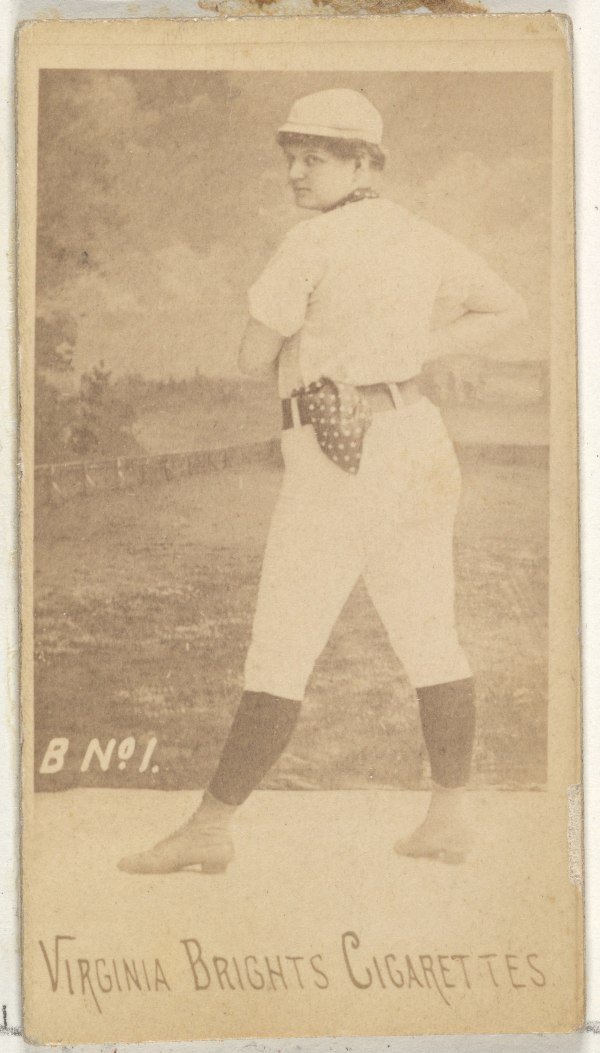
Type 1, Card 1. A Type 1 card featuring a pitcher sporting a polka dotted handkerchief. Polka dots become standard in the Type 2 series.
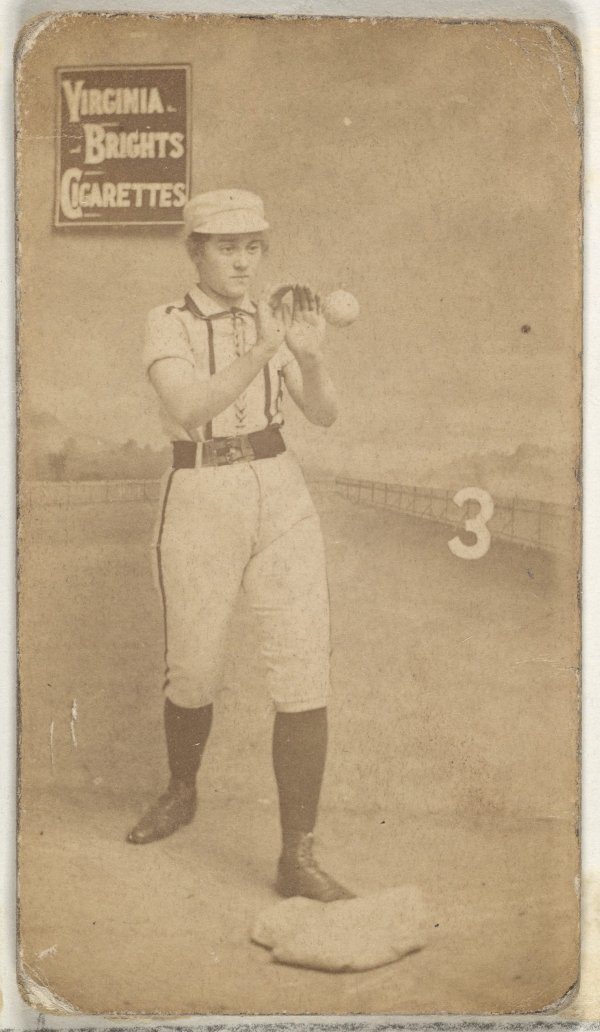
Type 2, Card 3.
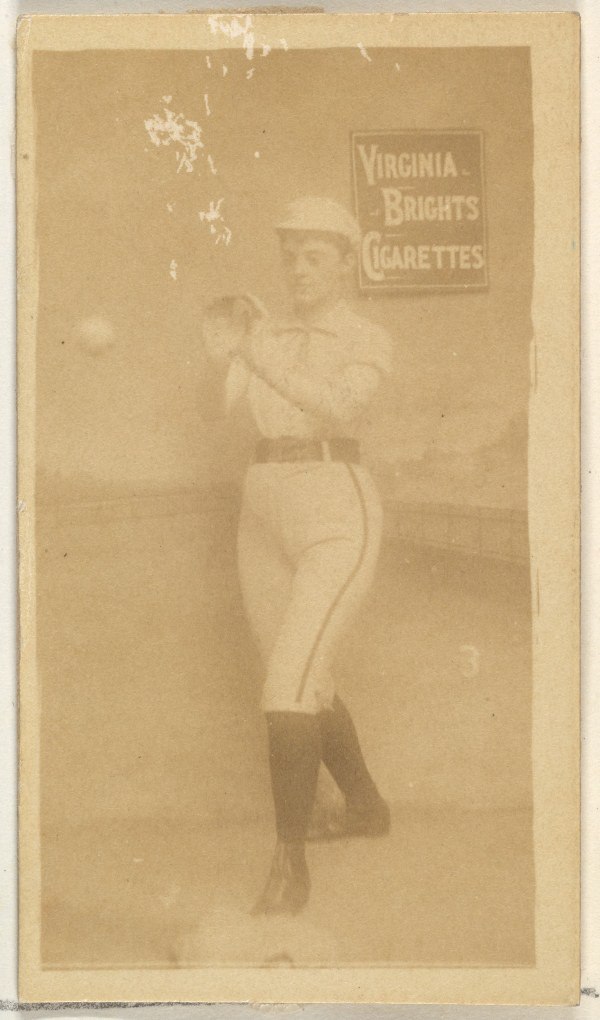
Type 2, Card 3. The matte painting suggests she's at first base.
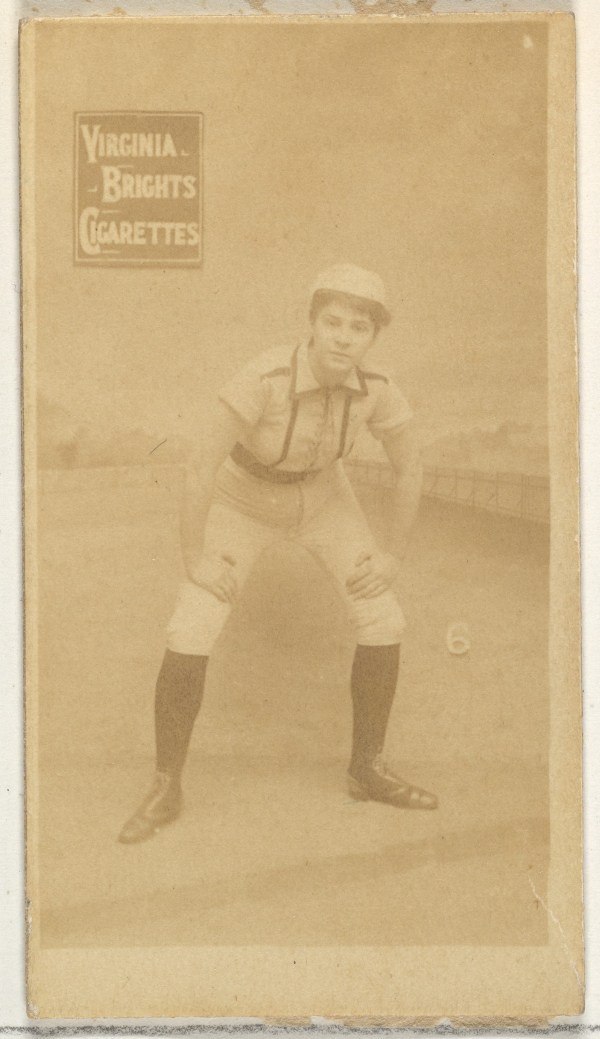
Type 2, Card 6. Her position is unspecified, but her stance suggests that she's in the outfield.
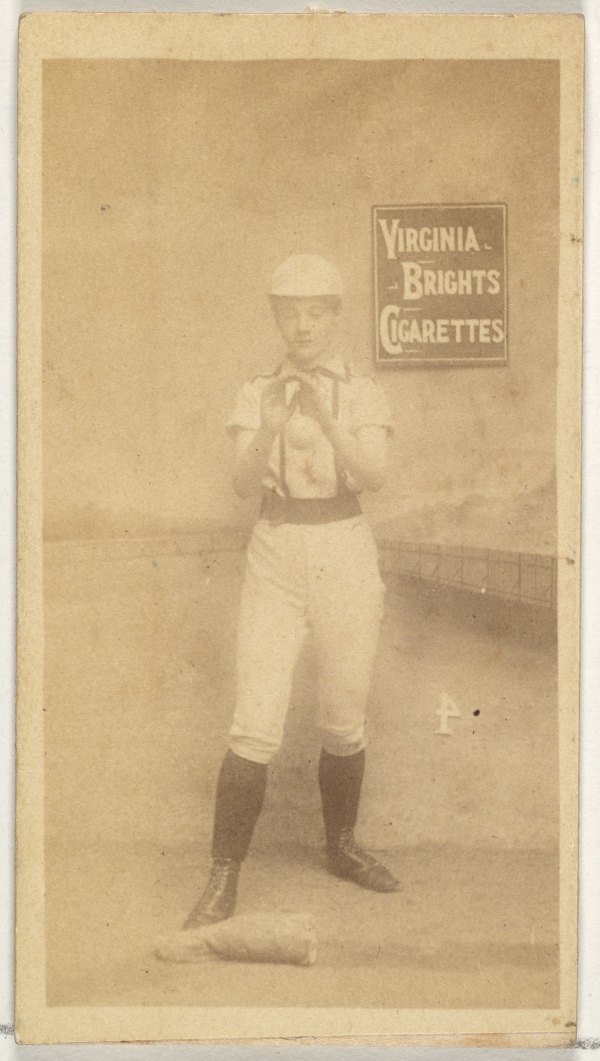
Type 2, Card 4. Note the reversed "4." The matte painting indicates she's at first base.
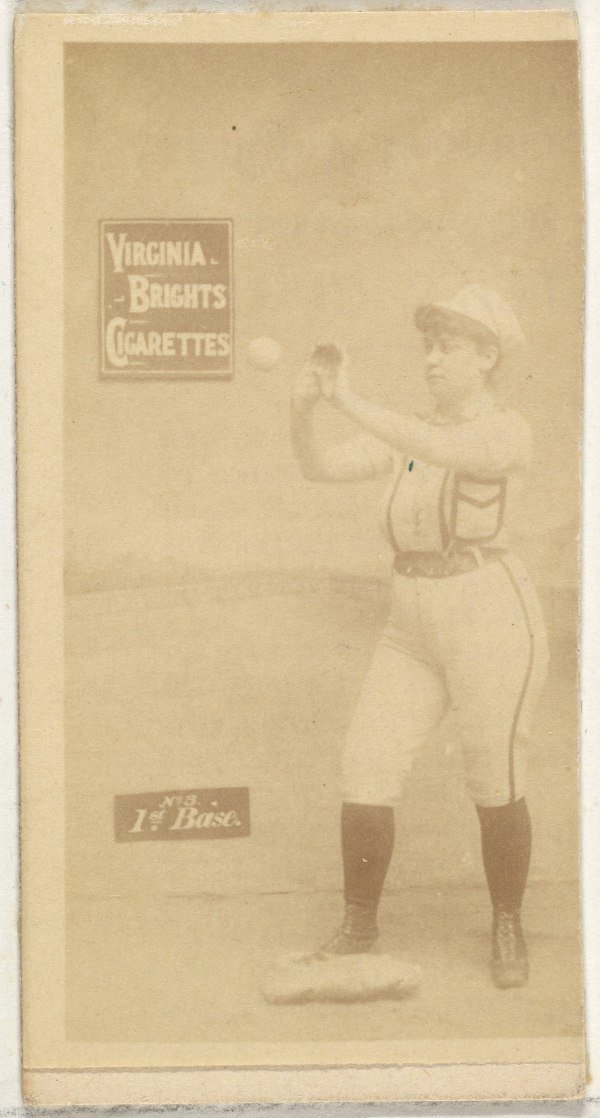
First Base, Type 2.
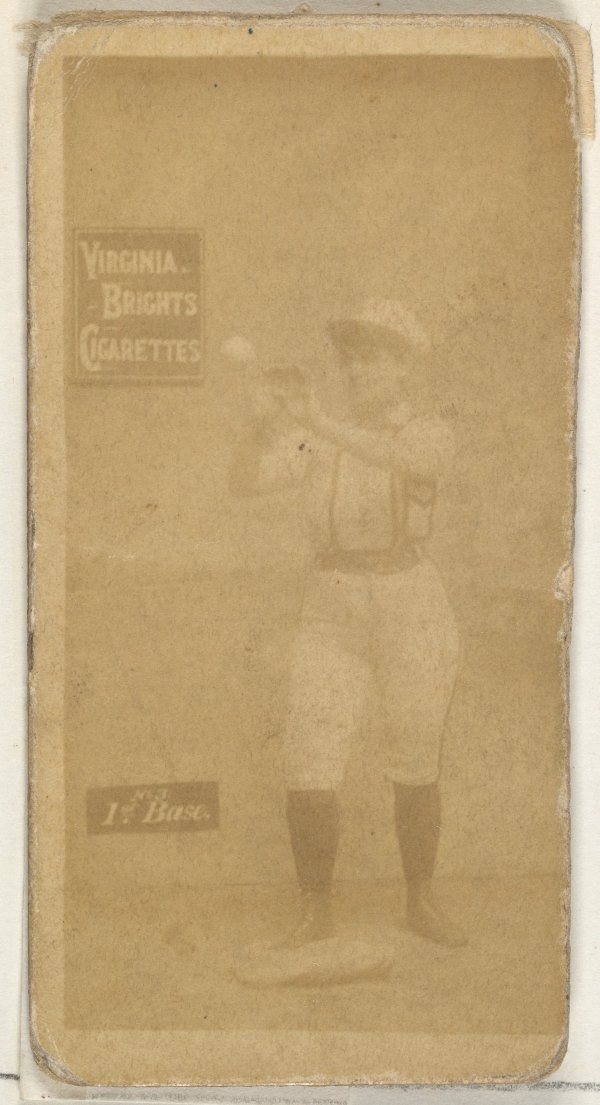
First Base, Type 2.
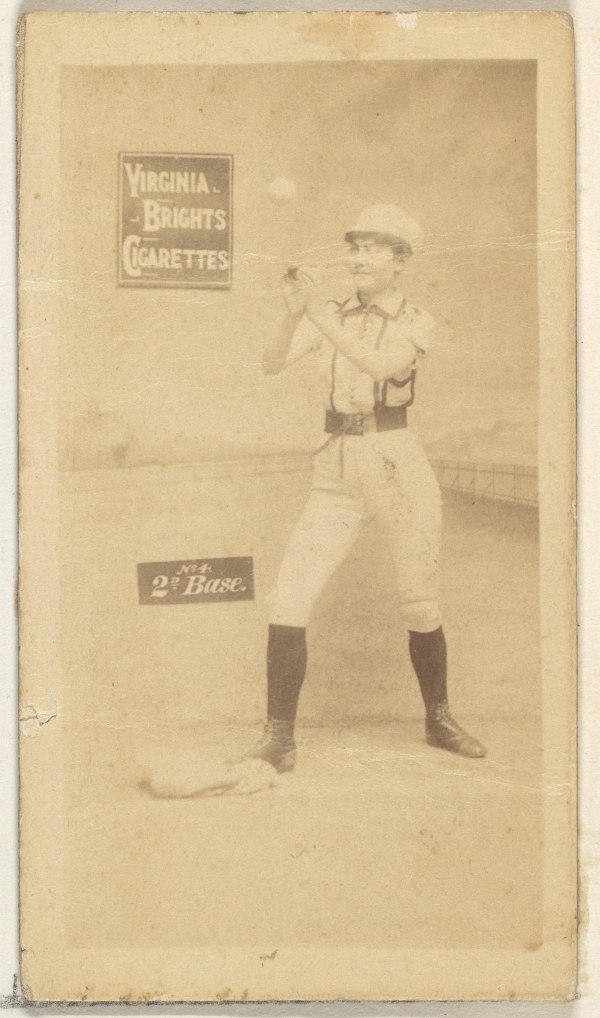
Second Base, Type 2.
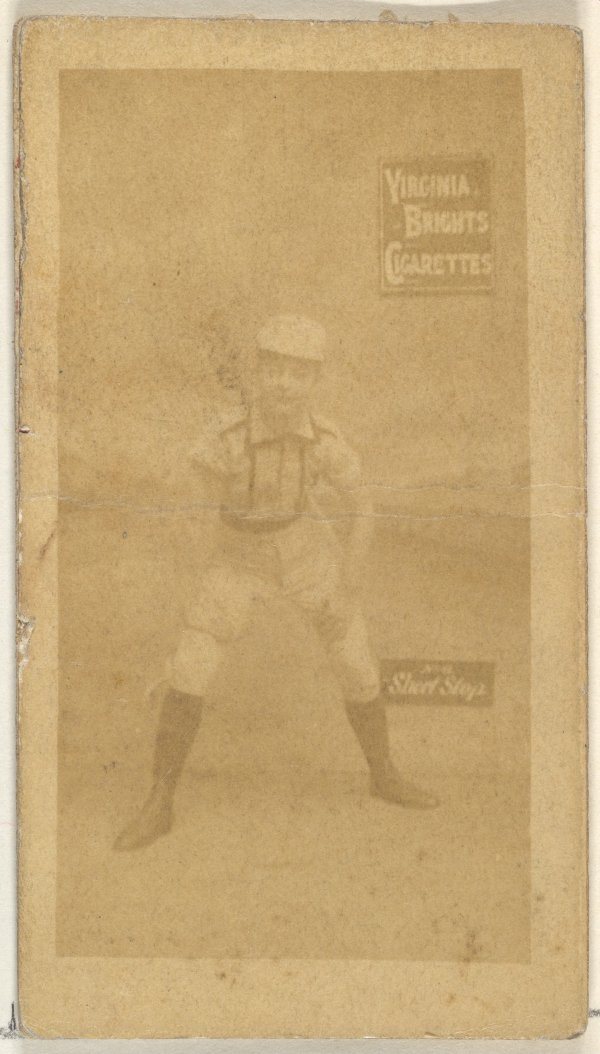
Shortstop, Type 2.
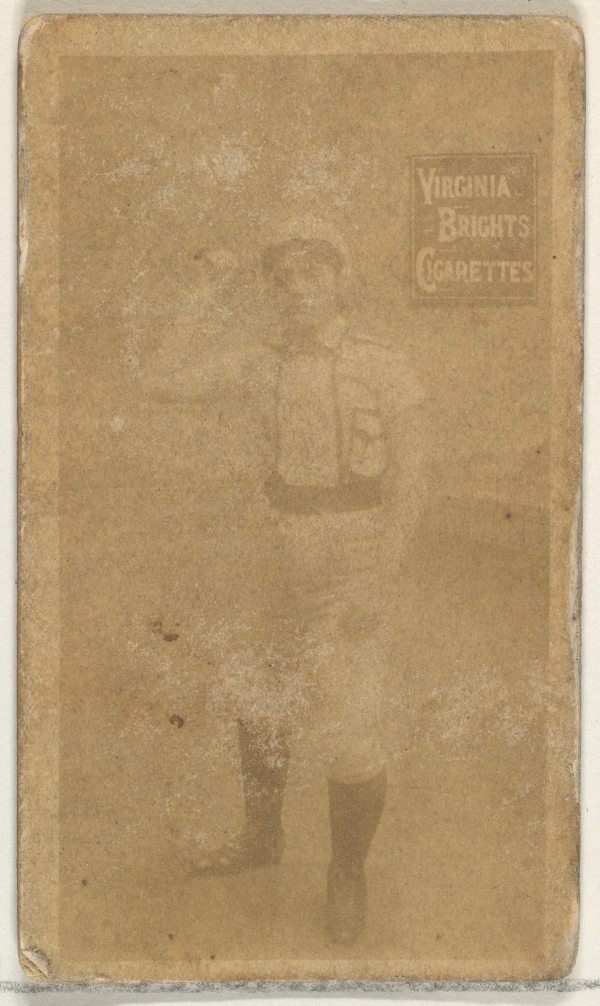
Type 2, Card Number Unknown.
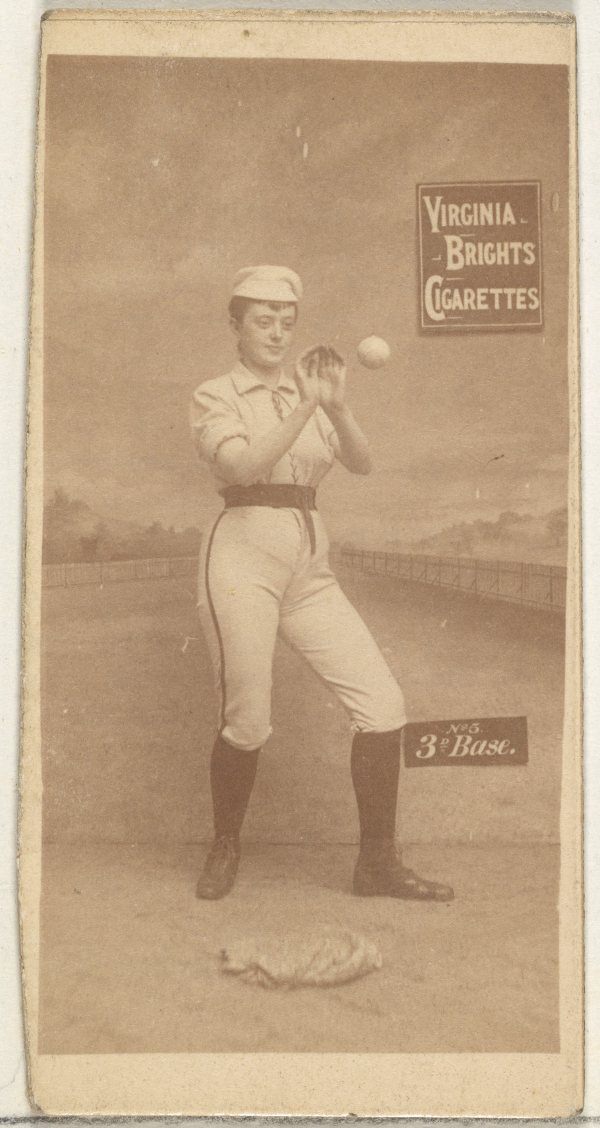
Third Base, Type 2.
No comments: